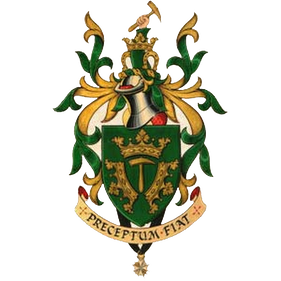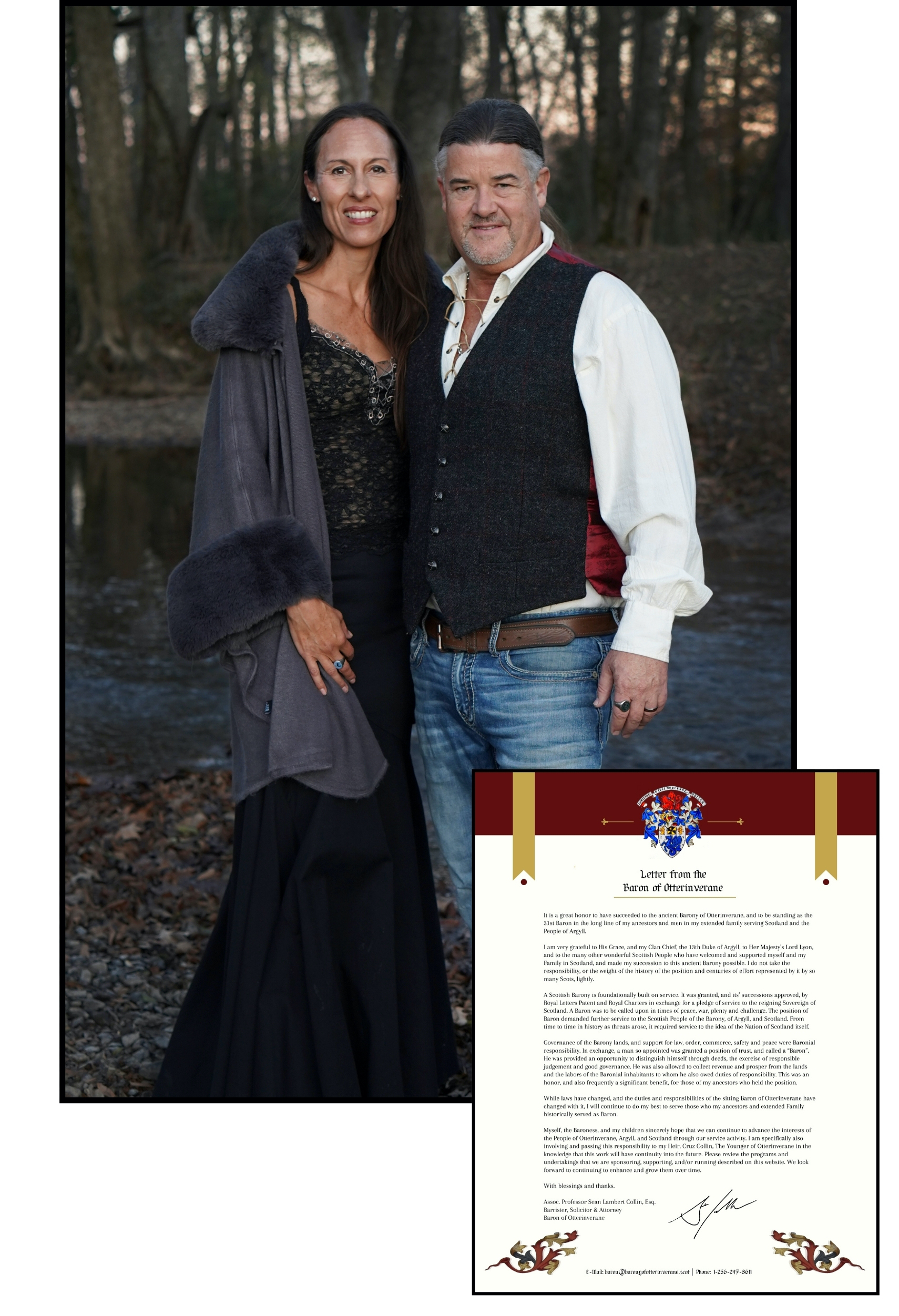Our Mission
To continue to serve the People of the Barony of Otterinverane, Argyll, and Scotland in continuity with prior historical Barons and to those whom they owed fielty and community responsibility. To promote, celebrate and support the unique Scottish history, culture, institutions, lands, nature, legal systems, and People of Scotland through sponsoring scholarship and development activity.
Links to the websites of the organizations with which the Baron is a member or registered, may be accessed by clicking each of the registered Arms, Crests, or Insignia belonging to each such respective organization listed below.
Links to the websites of the organizations with which the Baron is a member or registered, may be accessed by clicking each of the registered Arms, Crests, or Insignia belonging to each such respective organization listed above.
Otterinverane takes its name from the Gaelic Oitir an Bharain.

Otterinverane takes its name from the Gaelic Oitir an Bharain. ‘An Otir’ is a long low promontory; in this case the sandbank that juts out more than halfway across Loch Fyne, extending from the burn of Kilfinan to the burn of Largiemore. ‘Bharain’ means baron and Otterinverane is ‘the baron’s otter’, and the barony has been referred to throughout history as ‘the Otter.’
From the present day the descent of the Barony of Otterinverane can be traced back for more than half a millennium along the line of the Campbells of Lochow who became first the Earls of Argyll and later Dukes. The line has been broken only once.

Letter from the
Baron of Otterinverane
“It is a great honor to have succeeded to the ancient Barony of Otterinverane, and to be standing as the 31st Baron in the long line of my ancestors and men in my extended family serving Scotland and the People of Argyll.
I am very grateful to His Grace, and my Clan Chief, the 13th Duke of Argyll, to Her Majesty’s Lord Lyon, and to the many other wonderful Scottish People who have welcomed and supported myself and my Family in Scotland, and made my succession to this ancient Barony possible. I do not take the responsibility, or the weight of the history of the position and centuries of effort represented by it by so many Scots, lightly.
A Scottish Barony is foundationally built on service. It was granted, and its’ successions approved, by Royal Letters Patent and Royal Charters in exchange for a pledge of service to the reigning Sovereign of Scotland. A Baron was to be called upon in times of peace, war, plenty and challenge. The position of Baron demanded further service to the Scottish People of the Barony, of Argyll, and Scotland. From time to time in history as threats arose, it required service to the idea of the Nation of Scotland itself…”







